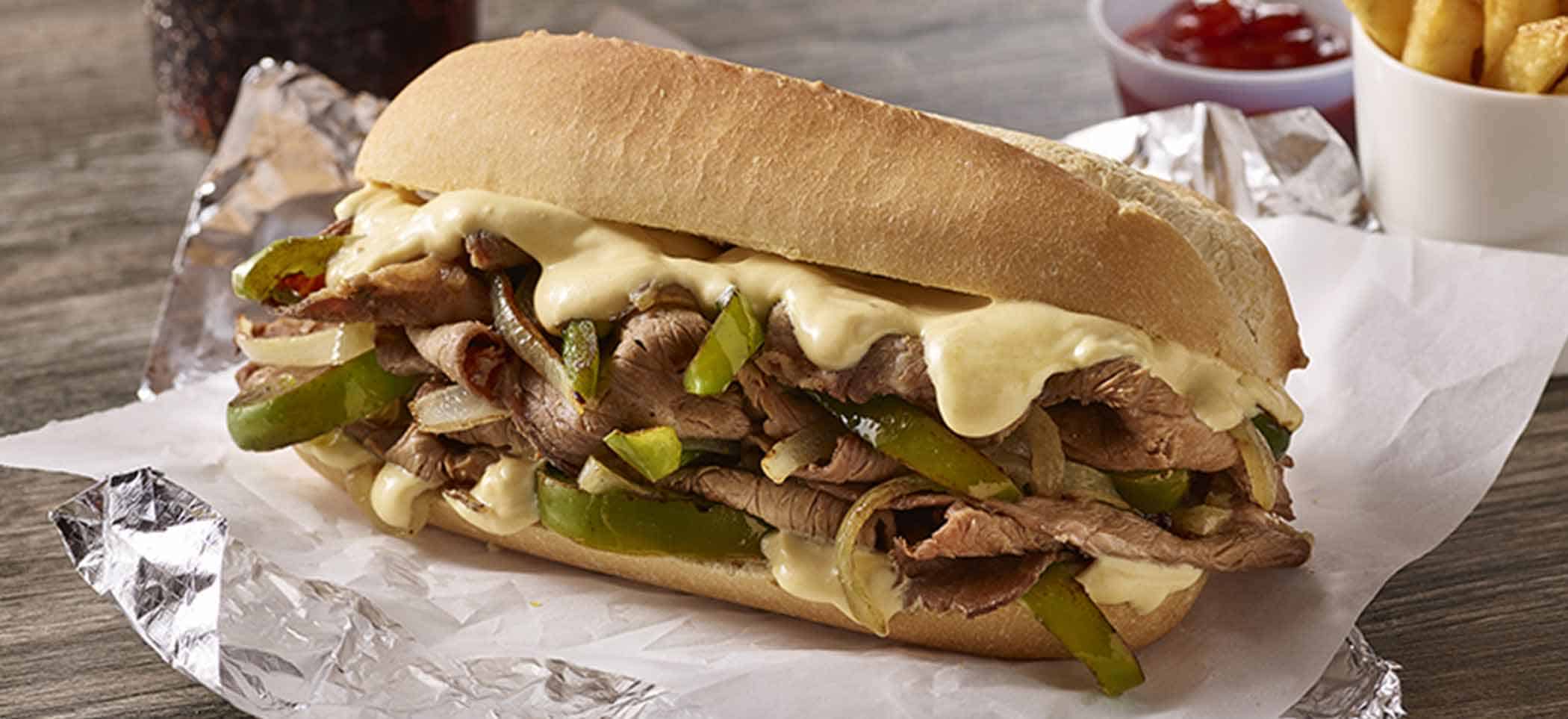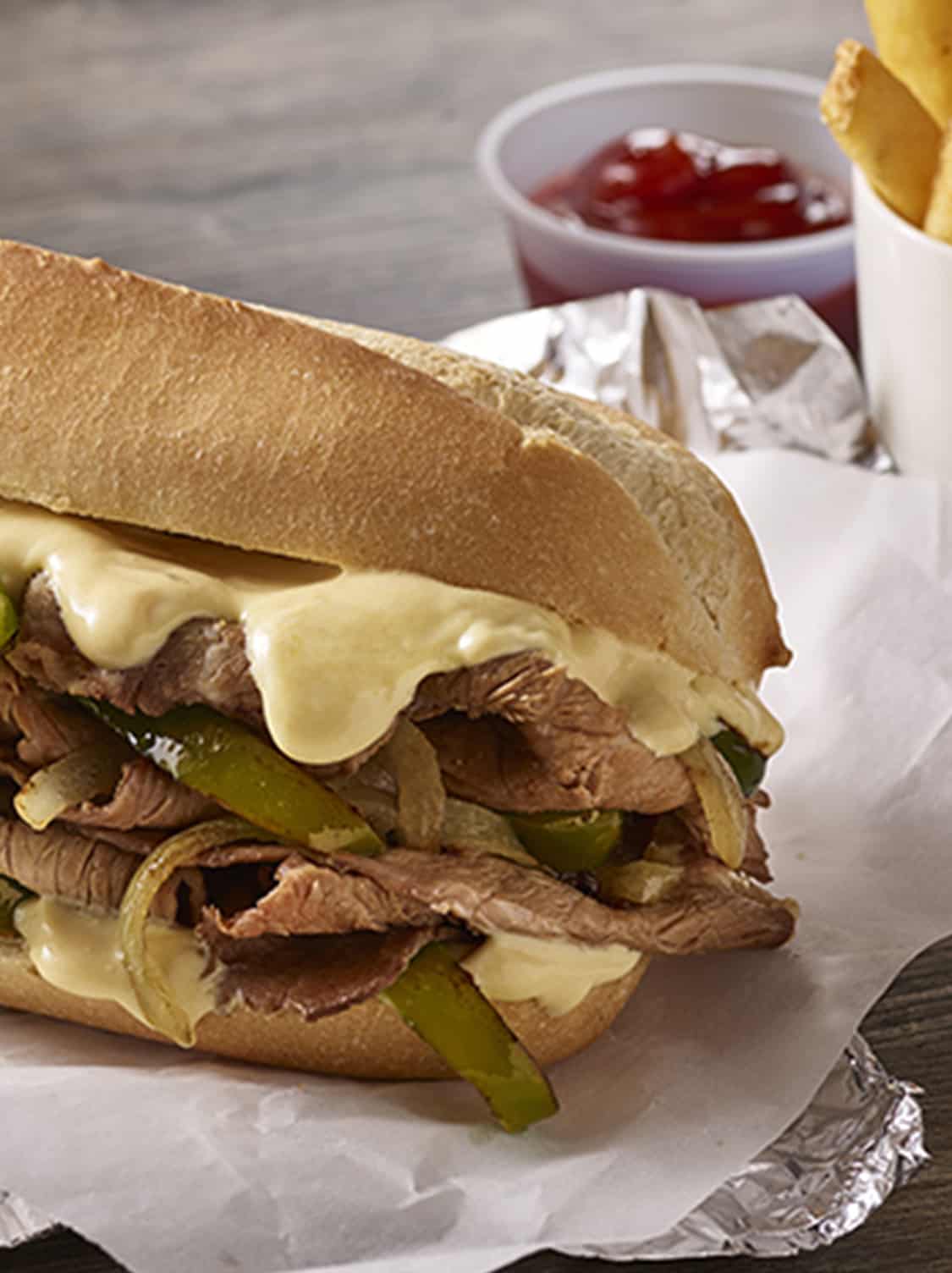

Yield: 4 servings
Paul Sletten
Chef/Owner
Abreo
Rockford, IL
Ingredients & Directions
- Directions
Directions
Place canola oil on griddle or in large cast iron skillet over high heat.
Meanwhile slice beef ribeye as thinly as possible (best on a slicer) and season with salt and pepper.
Add sliced peppers and onions to pan. Cook stirring constantly until they start to soften and slightly brown, about 5 minutes. Season with salt and pepper and remove from pan and set aside.
In same pan, add sliced beef. Cook fast until brown and fully cooked, about 3 minutes. You can leave beef in slices or mince with knife, your preference.
Warm hoagie rolls in 400°F oven for two minutes to lightly toast.
To assemble, fill each hoagie roll with an equal amount of beef, peppers and onions; spoon over two tablespoons of cheese hollandaise.
Ingredients
- 2 lb. beef ribeye
- 1 green pepper, sliced
- 1 onion, sliced
- 4 hoagie rolls
- 1 c. Cheddar-Parmesan Hollandaise (recipe follows)
- Salt and pepper to taste
- ½ tsp. canola oil
- Cheddar-Parmesan Hollandaise - Yield: 2 cups
Directions
Start by combining onion, white wine and Parmesan stock, bring to boil. Continue to cook until almost all liquid has evaporated.
In a blender, add egg yolks, cheddar powder and hot wine/onion mixture and blend on high speed.
Slowly add in butter to yolk mix until all incorporated and sauce is thick and creamy, add salt to taste.
Ingredients
- 4 large egg yolks
- 1 c. onion, diced
- 2 c. white wine
- 1 c. Parmesan stock (recipe follows)
- 2/3 c. cheddar powder
- 1 lb. butter, melted
- Salt to taste
- Parmesan Stock
Directions
Combine ingredients in medium saucepan. Bring to simmer and cook for 20 minutes; strain.
Ingredients
- 8 oz. Parmesan rinds
- 1 qt. water
To ensure food safety, eggs should be cooked until both the yolk and the white are firm. Consuming raw or undercooked eggs may increase your risk of foodborne illness, especially for those with certain medical conditions. For recipes that call for eggs that are raw or undercooked when the dish is served, use either pasteurized shell eggs that have been treated to destroy Salmonella, or use pasteurized egg products.
